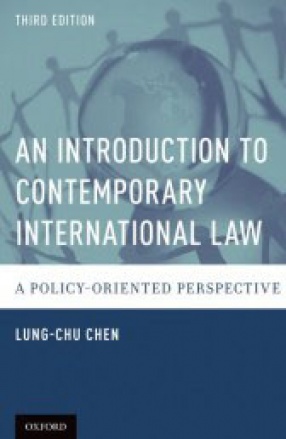An Introduction to Contemporary International Law: A Policy-Oriented Perspective introduces the reader to all major aspects of contemporary international law. It applies the highly acclaimed approach developed by the New Haven School of International Law, holding international law as an ongoing process of authoritative decision-making through which the members of the world community identify, clarify, and secure their common interests. Unlike conventional works in international law, this book is organized and structured in terms of the process of decision making in the international arena, and references both classic historical examples and contemporary events to illustrate international legal processes and principles.
Using contemporary examples, this Third Edition builds on the previous editions by contextualizing and dramatizing recent events with reference to seven features that characterize the New Haven School approach to international law: participants, perspectives, arenas of decision, bases of power, strategies, outcomes, and effects. This new edition highlights cutting-edge ideas in international law, including the right to self-determination, the evolution of Taiwan statehood, the expanding scope of international concern and the duty of states to protect human rights, the trend towards greater accountability for states and individual decision-makers under international law, and the vital role individual responsibility plays in the emerging field of international criminal law. It offers a new generation the intellectual tools needed to act as responsible citizens in a world community seeking human dignity and human security for all people.
Contents: Preface. Part One: Delimitation of the Task. 1. International Law in a Policy-Oriented Perspective. Part Two: Participants. 2. Nation-States. 3. International Governmental Organizations. 4. Nongovernmental Organizations and Associations. 5. The Individual. Part Three: Perspectives. 6. Minimum World Order and Optimum World Order. Part Four: Arenas. 7. Establishment of and Access to Arenas of Authority. Part Five: Bases of Power. 8. Control over Territory. 9. Control and Use of the Sea. 10. Control and Use of Other Resources. 11. Control of People: Nationality and Movement. 12. Protection of People: From Alien Rights to Human Rights. 13. Vertical Allocation of Authority. 14. Horizontal Allocation of Authority. Part Six: Strategies. 15. The Diplomatic Instrument. 16. International Agreements. 17. The Ideological Instrument. 18. The Economic Instrument. 19. The Military Instrument. Part Seven: Outcomes. 20. The Intelligence Function. 21. The Promoting Function. 22. The Prescribing (Lawmaking) Function. 23 The Invoking Function. 24. The Applying Function. 25. The Terminating Function. 26. The Appraising Function. Part Eight: Effects. 27. Succession of States. 28. Responsibility of States. 29. Individual Criminal Responsibility. Part Nine: Prospects. 30. Toward a World Community of Human Dignity. Bibliography. Table of Select Treaties. Index.





There are no reviews yet.